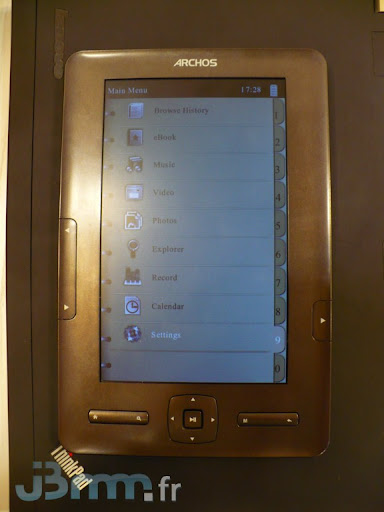I haven’t yet got the box, and I haven’t seen these features being confirmed or not by Google TV representatives, it’s being released right now in the US market. Here are some of my expectations for very interesting software and cloud service features to be available with the Google TV platform (currently an Intel CE4100 exclusive, but no reason it won’t work for ARM Cortex A9 SoCs soon as well). I base my speculation on a consideration that Google TV would be a totally open and centrally uncontrollable platform as Google has been describing it to be. If you have any means to confirm if any of these features can happen or not on Google TV, please post in the comments:
1. BitTorrent download/streaming: Just type in the name of a movie, TV show, game or song and it will download to an external USB hard drive, or perhaps even better, it will download to your cloud based storage, so-called online seedbox services which can download any BitTorrent on 1gbit/1gbit symmetrical connections and then stream you the downloaded content after minutes. Imagine such international seedboxing network, that can directly interlink and shares Petabytes among the most popular contents with each other, so in many cases, when you request a popular content, it will already be pre-cached on that seedbox or can quickly be cached within that network and instantly streamed to your Google TV box.
Not very legal? Who knows, laws can be changed by politicians, I expect Google TV could accelerate the implementation of Global Licence regulation, where everyone pays a sort of tax on their Internet Service Provider, which thus is redistributed to content creators directly, excluding old-media intermediaries.
It will be interesting to see if the local BitTorrent client app or if the global remote untracable encrypted seedboxing approach will dominate. I expect that this p2p app on Google TV cannot be blocked or remotely removed by Google, Sony, Logitech or by anyone else, that is, if the platform truly is open. I also expect live p2p streaming to work. So you could also watch any TV channel like this, with a quality bitrate that is the same as your own upload bandwidth, as everyone watching is expected to upload to other viewers in real-time so unlimited amounts of users can tune in for free to any live TV channel they want.
Subscribing to BitTorrent RSS feeds will be a great way to auto-download shows and have them ready stored on the USB hard drive to playback on your TV or to sync to your portable Android device.
2. Cloud-based DVR service: while I wonder if Google TV can record TV contents from its HDMI input, with or without needing to use the recently cracked HDCP copy-protection code, while it may be cool to store HD digital copies of TV contents on a simple external USB hard drive, the most interesting DVR feature of Google TV may be remote cloud based DVR services to be provided by Google and perhaps other cloud service providers. Basically, you hit the record button, and that content is recorded on the cloud. The way it truly would happen, is that Google is recording every TV channel all the time no matter what, and depending on laws and regulations, users should be able to get access to all of that content on-demand after broadcast.
This is one big Global cloud based DVR of all channels. Maybe it would require Google to also provide real-time compression of all those recordings so that people with slower bandwidths can still stream all those cloud DVR recordings. If laws and regulation for DVR use does not allow everyone from rewinding and watching everything on-demand, then at least as long as the user has scheduled any specific recordings, has clicked “record” before the show started, then all that content could be provided back. The question is, may the user click a “Record all channels all the time” button?
Google has been doing global cloud based DVR recordings for a while now, as they need it anyways for their content ID matching technology. So now, the release of Google TV may bring those cloud DVR recordings closer to YouTube as well, as TV contents will be posted to Youtube automatically, depending on rights with content makers. If a TV channel opts-in, 100% of their broadcasts can thus be automatically published to Youtube.
3. Game console: 3D graphics accelerating performance should be powerful enough to provide Wii-like gaming graphics. Logically, there will be emulators available for all Nintendo consoles up till N64 and more if Nintendo agrees to licence its games legally. Also, Google has been saying that video gaming is a big part of their plans for Android 3.0 Gingerbread, which probably also includes support thus for the Google TV platform. Which game controllers will be best to use? The Wii remote or any other decent Bluetooth remote control will probably work great for multi-player gaming.
4. YouTube Leanback: the key for Google TV is to provide an excellent Leanback experience for all web videos. It is absolutely important that when people search for anything, that the best most user targetted video for that topic is displayed in full screen instantly in one click. The recommendations algorithm that Google and other app providers need to implement as overlay layer on top of this Leanback experience is crucial as well. There needs to be one big green “Like” button and one big red “Skip” button of which all user ratings need to be carefully aggregated to thus provide personalized Leanback web video experience. This experience could be so good that it could take over most of people’s daily 5-hours of TV watching.
Imagine this scenario: Sit on your sofa, hit the green button. Leanback starts. It knows your topics of interest and launches a video in a mix of those genres that you like and from a source it thinks you will enjoy at that moment in time based on knowing your tastes. If you are in any specific mood for any specific contents, just type those in to tweak the recommendations algorithm at that moment to bring you contents in those more specified areas. At any moment you can add tags, add or select genres and topics to thus tweak what it brings to you at that moment.
The goal with Leanback is that the algorithm can bring you full screen video contents that should make you think following statement at every single time: Oh wow, this video is just awesome! more!
Eventually, Leanback should provide in-video automatic editing. If you are in a hurry, you could watch just the best parts of any video, skip past the boring parts. The way it learns what parts of videos are best, is that this green “Like” button and red “Skip” or fast-forward buttons can be pushed at any specific times by all users. When something really cool is going on in a video, you can hit the green “Like” button again, it thus creates hot-zones on all videos to thus be able to extract the best scenes and even add them to playlists together with the best scenes from other videos.
5. Content publishing: Google TV could turn out to be one of the futures central tool for creating your own TV contents and publishing it from your living room. The HD webcam such as Logitech’s is not only going to be used for HD video-conferencing, which already is ground-breaking and revolutionary (second best “just like being there” experience with family, friends, colleagues and customers). The HD Webcam could be used to record multi-user live podcast shows, with someone somewhere doing the real-time multi-camera editing, content that can be streamed live by unlimited other users and can be stored thus as TV shows. But it should also support uploading and publishing of any HD video contents from a camcorder, just plug in your HD camcorder to the USB connector of Google TV, and that video content can be published to YouTube HD this way.
6. Quad-HD content streaming: the reason Quad-HD does not yet exist in all our most modern HDTVs is not so much a technological issue, but more of an infrastructure issue. Regular terrestrial, satellite, cable TV networks supposedly do not provide enough bandwidth to provide Quad-HD TV contents on them. And in turn as well, no HDTV makers yet want to produce the Quad-HD screens saying the reason for not making them is because there is no content to watch. Google TV changes this. In theory, Quad-HD is just a newer processor inside of the HDTVs. The upgrade of processor inside of the HDTV to support 3840×2160 may just cost $50 more than the current 1920×1080 HDTV, at least if it is mass manufactured with quickly expanding demand. YouTube already supports Quad-HD content streaming. I estimate that the bandwidth required for on-demand Quad-HD video streaming could be around 24mbit/s. Many Google TV users may already have enough bandwidth to support this. And if full bandwidth is not always available, then any resolution above 1080p and below 2160p could be streamed at adaptable bitrates. It may be true that above 46″ Quad-HD screen may be required for good use of that extra resolution. But I have seen Quad-HD at trade shows for years now, and every time I see demonstrations, it simply is amazing and awesome, even just watching 8megapixel digicam pictures on a Quad-HD screen up close is an awesome experience, I find it 100x more interesting than the marketing fad that is 3DTV.



















